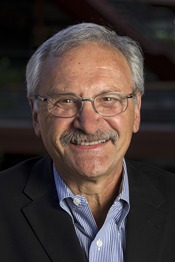Program Information
Grand Challenges in Medical Imaging and Radiomics

M Giger
S Armato
N Pelc
C McCollough
C McCollough
M Giger1*, S Armato2*, N Pelc3*, C McCollough4*, (1) University Chicago, Chicago, IL, (2) The University of Chicago, Chicago, IL, (3) Stanford University, Stanford, CA, (4) Mayo Clinic, Rochester, MN
Presentations
1:45 PM : Introduction to Grand Challenges - M Giger, Presenting Author1:50 PM : LungX - Lessons Learned and Key Results - S Armato, Presenting Author
2:10 PM : Overview of CT Reconstruction and Denoising Strategies - N Pelc, Presenting Author
2:35 PM : Overview of the Low Dose CT Grand Challenge - C McCollough, Presenting Author
2:50 PM : Winners 1, 2, & 3 and Q/A - C McCollough, Presenting Author
TU-FG-207A-0 (Tuesday, August 2, 2016) 1:45 PM - 3:45 PM Room: 207A
Peer-reviewed journals and conference proceedings publish hundreds of papers that describe new medical imaging algorithms, including, for example, techniques for computer-aided diagnosis or characterization, segmentation, image registration, image reconstruction, and radiomics. It is difficult, if not impossible, to fairly compare the performance of these algorithms as investigators must either use different data sets, or if using the same data, use different implementations of competing algorithms.
Grand Challenges facilitate the fair comparison of algorithms by providing a common data set to all participants and by having each participant be responsible for implementation of their own algorithm. The dissemination of findings from Grand Challenges provides important information to the scientific community and helps to determine which approaches have the greatest promise for successful translation to clinical practice.
In this session we will review the outcomes and lessons learned from the 2015 SPIE-AAPM-NCI Lung Nodule Classification Challenge. We will then turn to the 2016 NIH-AAPM-Mayo Clinic Low Dose CT Grand Challenge, providing an overview of denoising and iterative reconstruction approaches and a description of the Challenge. The top 3 performing participants will be announced, and each will give a short presentation on their technique.
Learning objectives:
1. Understand the role of Grand Challenges in the field of medical imaging
2. Be able to summarize the outcomes of the 2015 lung nodule classification challenge
3. Be able to review the primary types of noise reduction techniques used in CT
3. Be familiar with a library of patient CT projection data available to researchers
3. Learn which techniques performed best in the Low Dose CT Grand Challenge
Funding Support, Disclosures, and Conflict of Interest: Pelc: GE Healthcare, Philips Healthcare; McCollough: Research grant, Siemens Healthcare; Low Dose CT Grand Challenge supported by the AAPM Science Council and NIH (grant EB 017185), and hosted by the Mayo Clinic; Giger: stockholder R2 technology/Hologic, royalties from Hologic, GE Medical Systems, MEDIAN Technologies, Riverain Medical, Mitsubishi/Toshiba. Cofounder/stockholder Quantitative Insights.
Handouts
- 115-34542-393514-118433.pdf (N Pelc)
- 115-34553-393514-118142.pdf (M Giger)
- 115-34554-393514-120231.pdf (S Armato)
- 115-34555-393514-118411.pdf (C McCollough)
Contact Email:





